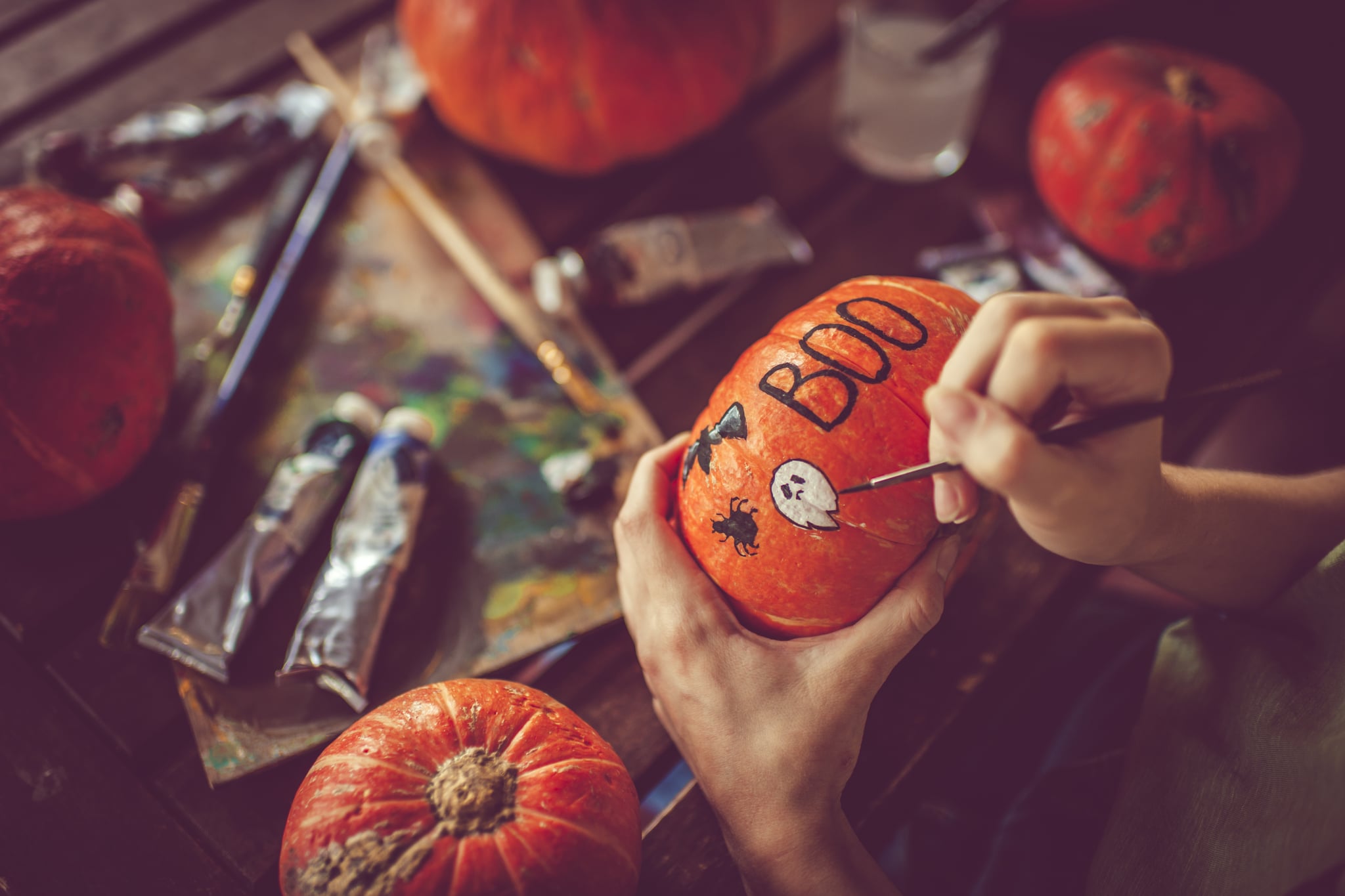
Pumpkins are a fall decor staple, adorning our homes in various forms from early September through Thanksgiving. Carving pumpkins may be the classic way to decorate them for Halloween, but painting the gourds has become an equally popular option. While pumpkin painting requires some crafty DIY skills, it creates a lasting seasonal porch furnishing that won’t rot away at the first sign of a fall breeze.
For anyone wondering how to paint a pumpkin or what kind of paint to use for pumpkins, we did some research so you can create the ultimate design for the spooky season. Bright colors, intricate patterns, funny themes — with something as customizable as a pumpkin, you can try as many different paint designs in as many hues as you’d like. The possibilities are truly endless.
Before you embark on your own pumpkin painting adventure, there are a few details to keep in mind so the process doesn’t get too messy. For one, choosing the best paint for pumpkins is crucial if you want your designs to make it past Halloween and well into November. There are also other steps to consider, from priming the pumpkin surface to sealing your completed design once it’s all done. Read through the tips ahead for a rundown of all the need-to-know things about painted pumpkin art.
— Additional reporting by Lauren Harano, Melissa Santoyo, and Chanel Vargas
Step 1: Choose the Right Pumpkin
Whether your pumpkin is store-bought or you grew the pumpkin yourself, the perfect paintable gourd is one without blemishes, especially rotten spots. It’s helpful to have an idea of how you want to paint the pumpkin so you can select the proper shape. If you want to incorporate some warts (to create a witch, for example) or other features into your design, be our guest. Otherwise, it’s important to look for a pumpkin with shallow ribbing to give yourself an easy surface to paint on.
Step 2: Prep Your Pumpkin
Before you jump right into painting your pumpkin, you should prepare the surface by washing it. Wipe it down with a sanitizing wipe or a soft cloth and some mild soap. This removes dirt and grime to give you a clean surface to paint on, and it also eliminates bacteria that might speed up the pumpkin-rotting process.
Step 3: Seal Your Pumpkin
Sealing your pumpkin before you paint it is optional, but it helps prevent peeling and creates a better surface for the paint to adhere to. Choose an aerosol or brush sealant and cover your pumpkin in a thin layer of the product. Because pumpkins are round, you may have to spray one half with the sealant and wait for it to dry before spraying the other half. It won’t necessarily preserve the pumpkin itself, but it can help with seamless paint application.
Step 4: What Kind of Paint to Use For Pumpkins
The best paint for pumpkins depends on a couple of factors. If you’re painting pumpkins with kids, choose a washable paint so you don’t have to worry too much about the mess. If you’re DIYing with adults, acrylic or spray paint is the best paint for pumpkins because they won’t crack. You can also use puff paint for certain details, such as creating a lacy effect. If you’re feeling extra creative, you can even break out the chalkboard paint to create something a little different.
Step 5: What Kind of Brushes to Use For Pumpkins
While pumpkins can be pretty sturdy, their skin can be easily damaged if you’re not careful. When painting a pumpkin, you’ll want to avoid hard, bristly brushes. Instead, opt for sponge brushes and brushes with softer bristles so you don’t damage the skin or scratch your pumpkin. If your pumpkin is already pretty rough, though, bristly brushes might be best.
Step 6: Plan Your Design
Now that all the prep work is done, you should consider how you want to paint your pumpkin. Some people prefer to be spontaneous with their decorating, while others like to have a plan figured out before they start. Start by tracing your design on your pumpkin with a pencil, or you can even use a creative predesigned pumpkin stencil as the outline. Then go over the pencil markings with paint.
Step 7: Add Your Finishing Touches
Once you’ve applied the paint, your pumpkin may look complete, but it’s important to consider any finishing touches that could take your design from spooky to spooktacular. For instance, you may want to add a second layer of paint or a swipe of glitter to emphasize certain details, and an additional layer of sealant could help preserve your work even longer. If you’re feeling especially crafty, you can even break out the carving tools to etch the paint for a cool 3D effect, or get creative with the hot glue gun and add a pair of googly eyes.
Once you’re satisfied with your painted pumpkin design, pick a spot for all to see and put your masterpiece on display all season long.

